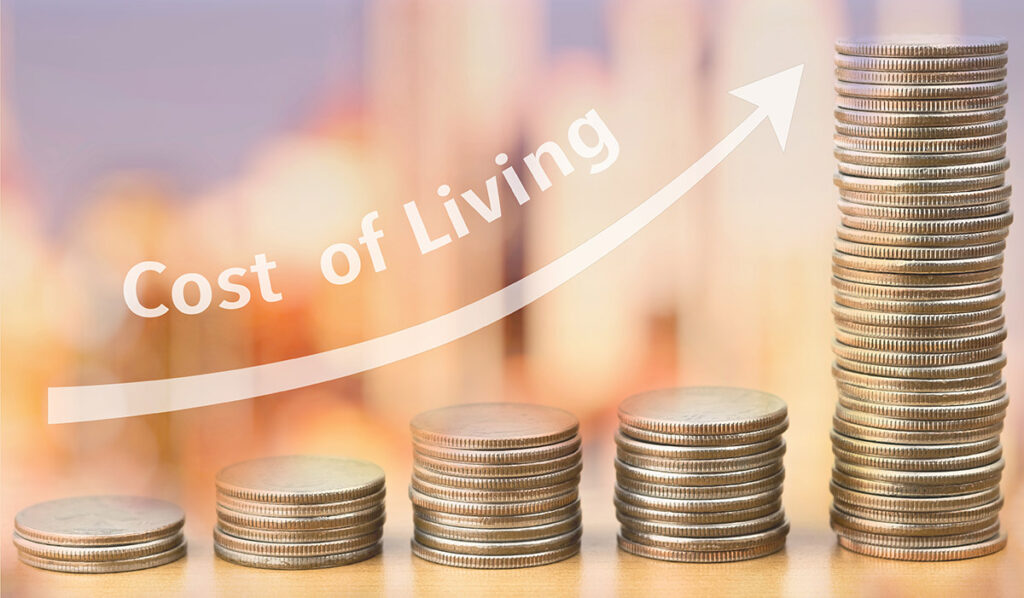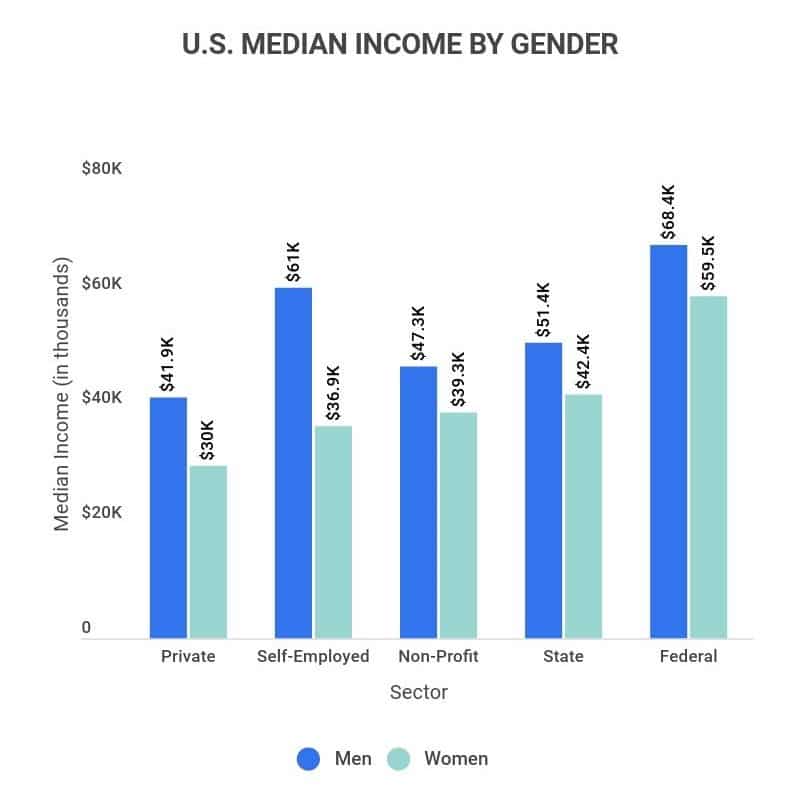Understanding the Cost of Living in Your Area
The cost of living varies significantly depending on the location, and this affects the purchasing power of a $2000 monthly income. For instance, $2000 can go a long way in cities with a low cost of living, such as Des Moines, Iowa, or Omaha, Nebraska. In these cities, the average rent for a one-bedroom apartment is around $700-$800 per month, and the overall cost of living is about 10% lower than the national average.
On the other hand, cities with a high cost of living, such as San Francisco, California, or New York City, can make it challenging to make ends meet on a $2000 monthly income. In these cities, the average rent for a one-bedroom apartment can exceed $2,000 per month, and the overall cost of living is about 50% higher than the national average.
When evaluating whether $2000 a month is a good income, it’s essential to consider the cost of living in your area. If you live in a city with a high cost of living, you may need to adjust your budget and make some lifestyle changes to make the most of your income. However, if you live in a city with a low cost of living, you may find that $2000 a month provides a comfortable standard of living.
Some examples of cities with high and low costs of living include:
- High cost of living: San Francisco, CA, New York City, NY, Seattle, WA
- Low cost of living: Des Moines, IA, Omaha, NE, Knoxville, TN
Ultimately, whether $2000 a month is a good income depends on your individual circumstances, including your location, lifestyle, and financial goals. By understanding the cost of living in your area, you can make informed decisions about your budget and make the most of your income.
Assessing Your Financial Goals and Expenses
When evaluating whether $2000 a month is a good income, it’s essential to consider individual financial goals and expenses. Financial goals can vary significantly from person to person, and what may be a good income for one person may not be sufficient for another. For example, someone who is trying to save for retirement may need to allocate a larger portion of their income towards retirement savings, while someone who is trying to pay off high-interest debt may need to prioritize debt repayment.
To assess whether $2000 a month is a good income, it’s crucial to track expenses and create a budget. This can be done by categorizing expenses into needs (housing, food, utilities) and wants (entertainment, hobbies), and then allocating a specific amount of money towards each category. By doing so, individuals can identify areas where they can cut back on unnecessary expenses and allocate more money towards their financial goals.
Some tips for tracking expenses and creating a budget include:
- Using a budgeting app or spreadsheet to track income and expenses
- Categorizing expenses into needs and wants
- Allocating a specific amount of money towards each category
- Regularly reviewing and adjusting the budget to ensure it’s aligned with financial goals
Additionally, it’s essential to consider debt obligations when evaluating whether $2000 a month is a good income. High-interest debt, such as credit card debt, can significantly reduce the purchasing power of a $2000 monthly income. By prioritizing debt repayment and creating a plan to pay off high-interest debt, individuals can free up more money in their budget to allocate towards their financial goals.
Ultimately, whether $2000 a month is a good income depends on individual financial goals and expenses. By tracking expenses, creating a budget, and prioritizing debt repayment, individuals can make the most of their income and achieve their financial goals.
How to Make the Most of a $2000 Monthly Income
While $2000 a month may not be a high income, there are several strategies that can help optimize it. One of the most effective ways to make the most of a $2000 monthly income is to reduce expenses. This can be achieved by creating a budget, cutting back on unnecessary expenses, and finding ways to save money on everyday items.
Another strategy is to increase income through side hustles or investments. This can include starting a part-time business, freelancing, or investing in stocks or real estate. By diversifying income streams, individuals can reduce their reliance on a single income source and increase their overall earnings.
Building multiple income streams is also crucial for making the most of a $2000 monthly income. This can include starting a blog or YouTube channel, creating and selling online courses, or renting out a spare room on Airbnb. By having multiple income streams, individuals can reduce their financial stress and increase their financial stability.
Some other strategies for optimizing a $2000 monthly income include:
- Cooking at home instead of eating out
- Cancelling subscription services that are not used
- Shopping for groceries and household items in bulk
- Using public transportation or walking/biking instead of driving
- Using cashback and rewards credit cards for everyday purchases
By implementing these strategies, individuals can make the most of a $2000 monthly income and achieve their financial goals. Whether it’s paying off debt, building an emergency fund, or saving for retirement, optimizing a $2000 monthly income can help individuals achieve financial stability and security.
Ultimately, whether $2000 a month is a good income depends on individual circumstances. However, by reducing expenses, increasing income, and building multiple income streams, individuals can make the most of their income and achieve their financial goals.
Comparing $2000 to the National Average Salary
The national average salary in the United States is around $56,000 per year, or approximately $4,667 per month. Compared to this, a $2000 monthly income is significantly lower. However, it’s essential to consider that the national average salary is skewed by high-paying jobs in certain industries, such as finance and technology.
In reality, many people earn lower salaries, and a $2000 monthly income may be more comparable to the median salary in certain regions or industries. For example, according to data from the Bureau of Labor Statistics, the median annual salary for workers in the retail industry is around $25,000, or approximately $2,083 per month.
Earning above or below the national average salary can have significant implications for an individual’s financial stability and security. Those who earn above the national average may have more disposable income to invest, save, and enjoy luxuries, while those who earn below the national average may struggle to make ends meet.
However, it’s essential to remember that salary is just one factor in determining financial stability. Other factors, such as debt, expenses, and financial goals, also play a significant role. Whether $2000 a month is a good income depends on individual circumstances, including financial goals, expenses, and debt obligations.
Some examples of industries and occupations that may have lower average salaries include:
- Retail workers: $25,000 per year (approximately $2,083 per month)
- Food service workers: $20,000 per year (approximately $1,667 per month)
- Entry-level administrative assistants: $30,000 per year (approximately $2,500 per month)
Ultimately, whether $2000 a month is a good income depends on individual circumstances. By considering the national average salary and other factors, such as debt and expenses, individuals can make informed decisions about their financial stability and security.
The Impact of Taxes on Your Take-Home Pay
Taxes can significantly impact the purchasing power of a $2000 monthly income. Depending on the tax bracket and deductions, taxes can reduce the take-home pay by 20-30%. This means that a $2000 monthly income may actually be closer to $1400-$1600 per month after taxes.
Understanding how taxes affect take-home pay is crucial for evaluating the adequacy of a $2000 monthly income. Taxes can vary significantly depending on the location, income level, and deductions. For example, someone living in a state with high income taxes, such as California or New York, may have a lower take-home pay compared to someone living in a state with low income taxes, such as Texas or Florida.
There are several strategies for minimizing tax liability and maximizing take-home pay. One approach is to take advantage of tax-advantaged savings options, such as 401(k) or IRA accounts. These accounts allow individuals to save for retirement and reduce their taxable income, resulting in lower taxes and higher take-home pay.
Another strategy is to optimize deductions and credits. For example, individuals may be eligible for deductions such as mortgage interest, charitable donations, or medical expenses. Additionally, tax credits such as the Earned Income Tax Credit (EITC) or the Child Tax Credit can provide significant tax savings.
Some examples of tax-advantaged savings options include:
- 401(k) or IRA accounts for retirement savings
- Health Savings Accounts (HSAs) for medical expenses
- 529 plans for education expenses
Ultimately, understanding the impact of taxes on take-home pay is essential for evaluating the adequacy of a $2000 monthly income. By taking advantage of tax-advantaged savings options and optimizing deductions and credits, individuals can minimize their tax liability and maximize their take-home pay.
Investing and Saving on a $2000 Monthly Income
Investing and saving for long-term financial goals is crucial, even on a modest income. While it may seem challenging to save and invest on a $2000 monthly income, there are several strategies that can help. One approach is to start small and automate savings through payroll deductions or automatic transfers from a checking account.
Low-cost investment options, such as index funds or ETFs, can provide a low-risk and low-cost way to invest in the stock market. Additionally, tax-advantaged savings options, such as 401(k) or IRA accounts, can provide tax benefits and help individuals save for retirement.
Automated savings strategies, such as dollar-cost averaging, can help individuals invest a fixed amount of money at regular intervals, regardless of the market’s performance. This approach can help reduce the impact of market volatility and timing risks.
Some examples of low-cost investment options include:
- Index funds or ETFs that track the S&P 500 or other broad market indices
- Target date funds that automatically adjust asset allocation based on retirement date
- Real estate investment trusts (REITs) that provide exposure to real estate without directly owning physical properties
When investing and saving on a $2000 monthly income, it’s essential to prioritize needs over wants and make sacrifices if necessary. By starting small, automating savings, and taking advantage of low-cost investment options, individuals can make progress towards their long-term financial goals.
Ultimately, investing and saving on a $2000 monthly income requires discipline, patience, and a long-term perspective. By making informed decisions and taking advantage of available resources, individuals can create a brighter financial future for themselves and their loved ones.
Managing Debt on a $2000 Monthly Income
Managing debt is a crucial aspect of financial stability, especially on a modest income. When evaluating whether $2000 a month is a good income, it’s essential to consider debt obligations and their impact on financial stability. High-interest debt, such as credit card debt, can significantly reduce the purchasing power of a $2000 monthly income.
Strategies for managing debt on a $2000 monthly income include paying off high-interest debt first, consolidating debt into lower-interest loans or credit cards, and avoiding debt traps such as payday loans. Additionally, creating a debt repayment plan and sticking to it can help individuals pay off debt and improve their financial stability.
The impact of debt on credit scores and financial stability cannot be overstated. High levels of debt can lead to poor credit scores, making it more difficult to obtain credit or loans in the future. Furthermore, debt can also lead to financial stress and anxiety, making it essential to manage debt effectively.
Some examples of debt management strategies include:
- Debt snowball method: paying off debts with the smallest balances first
- Debt avalanche method: paying off debts with the highest interest rates first
- Debt consolidation: combining multiple debts into a single loan with a lower interest rate
Ultimately, managing debt on a $2000 monthly income requires discipline, patience, and a solid understanding of personal finance. By creating a debt repayment plan and sticking to it, individuals can pay off debt and improve their financial stability.
When evaluating whether $2000 a month is a good income, it’s essential to consider debt obligations and their impact on financial stability. By managing debt effectively, individuals can make the most of their income and achieve their financial goals.
Conclusion: Is $2000 a Month a Good Income for You?
Evaluating whether $2000 a month is a good income requires careful consideration of individual financial goals, expenses, and debt obligations. While $2000 a month may be sufficient for some, it may not be enough for others. By understanding the cost of living in your area, assessing your financial goals and expenses, and optimizing your income, you can make the most of your $2000 monthly income.
Ultimately, whether $2000 a month is a good income for you depends on your individual circumstances. By considering your financial goals, expenses, and debt obligations, you can make an informed decision about whether $2000 a month is sufficient for your needs.
To evaluate whether $2000 a month is a good income for you, consider the following framework:
- Calculate your net income (take-home pay) after taxes and deductions
- Assess your monthly expenses, including rent/mortgage, utilities, food, transportation, and debt payments
- Evaluate your financial goals, such as saving for retirement, paying off debt, or building an emergency fund
- Consider your debt obligations, including credit card debt, student loans, and personal loans
- Optimize your income by reducing expenses, increasing income through side hustles or investments, and building multiple income streams
By following this framework, you can make an informed decision about whether $2000 a month is a good income for you. Remember to regularly review and adjust your budget to ensure you are making the most of your income.








